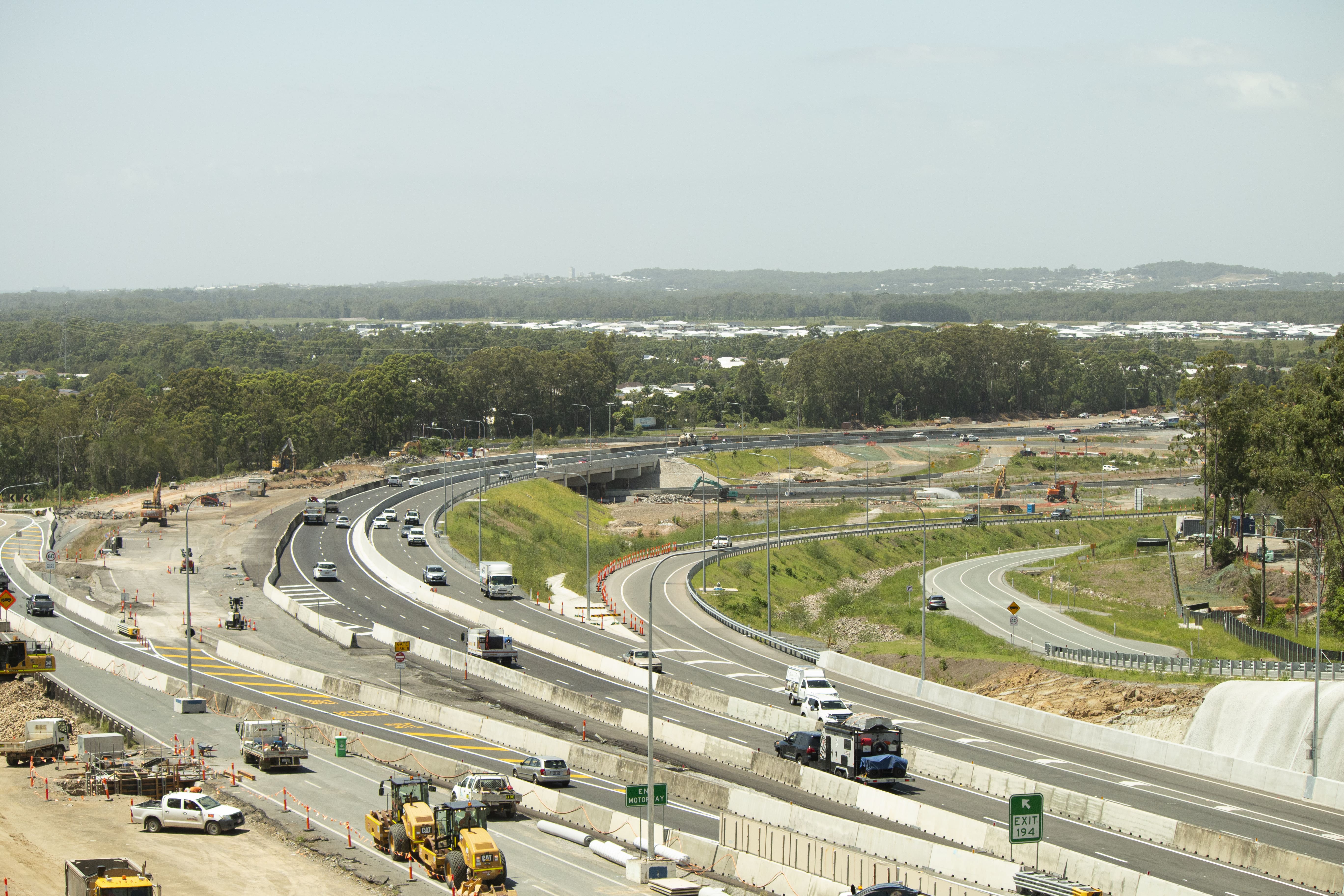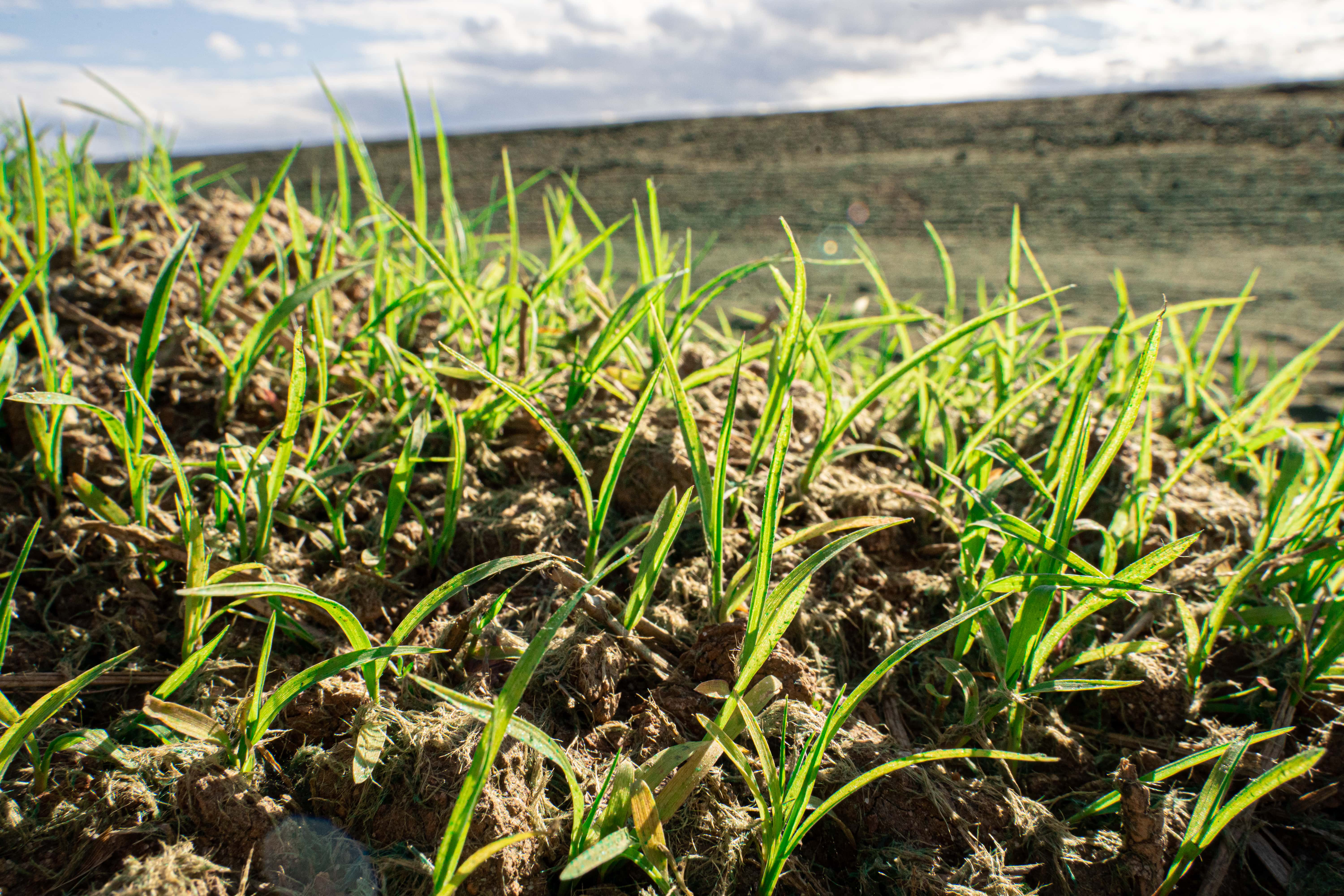Background
The Bruce Highway Upgrade Program is the largest road infrastructure program Queensland has ever seen. It is aimed at improving safety, flood resilience, and capacity along the length and breadth of the highway between Brisbane and Cairns.
The Bruce Highway is being upgraded to 6-lanes between Caloundra Road and the Sunshine Motorway including major upgrades to both interchanges and a new 2-way service road for local traffic between Steve Irwin Way and Tanawha Tourist Drive.
The upgrade is being delivered to provide vital infrastructure that will support the growth of the Sunshine Coast region well into the future.
Benefits
- Improves safety
- Increases traffic flow
- Increases capacity
- Contributes to regional growth
- Improves network efficiency
- Reduces peak hour congestion
- Improves flood immunity
- Better road access
Key features
- A new southbound exit ramp from the Bruce Highway to Pignata Road to provide safe and direct access to the local road network, as well as a future connection to the Harmony development in Palmview.
- A Diverging Diamond Interchange to replace the existing Caloundra Road interchange.
- Reduction of the project footprint on the former Beerwah State Forest.
- New free-flowing, grade separated ramps replacing the existing intersection on the old Bruce Highway northbound exit ramp to the Sunshine Motorway near Wilson Road.
- A secondary access to the western service road at the Sunshine Motorway interchange for northbound traffic on the Bruce Highway.
- Direct access to the Sippy Downs interchange from the western service road for local traffic.
- New active transport infrastructure for bike riders and pedestrians, as well as new carpool and bus stop facilities.
Funding
The project is funded by the Australian and Queensland governments on an 80:20 basis.
Total investment
$932 million
Australian Government
$745.6 million
Queensland Government
$186.4 million
Caloundra Road interchange
In an Australian first, the Caloundra Road interchange has been transformed into a Diverging Diamond Interchange (DDI) through this project. The new interchange became fully operational in December 2020, with all lanes and ramps open to traffic. The DDI’s innovative design is cost effective because it minimises the project footprint (requires fewer bridges and roads) while tackling congestion, increasing capacity, improving safety and providing active transport connections.
Sustainable and active transport infrastructure
A key consideration of the project is improving connectivity to provide safe and sustainable travel between Caloundra Road, Steve Irwin Way and Tanawha Tourist Drive. The new car pool facility at Palmview has opened to the public and is used daily by commuters. Construction of new active transport infrastructure for bike riders and pedestrians and new bus stops is nearing completion.
Bike riding and pedestrian facilities
A new dedicated pedestrian and bike riding bridge next to the existing Sippy Downs interchange is now open. The bridge improves safety and access to the educational, business, and residential precincts at Sippy Downs.
Construction of more than 9km of new dedicated lanes and pathways for bike riders and pedestrians is also nearing completion throughout the project area.
Once completed, these lanes and pathways for bike riders and pedestrians will:
- extend access from Caloundra Road at Meridan Plains, through the new Diverging Diamond Interchange to link with Steve Irwin Way at Glenview
- provide a major new pathway running the entire length of the new western service road from Glenview in the south to Sippy Downs in the north
- improve access to the local road network.
Pignata Road car pool facility
The new car pool facility between the Bruce Highway and Pignata Road at Palmview opened to the public in late 2017.
Catering for 240 vehicles in a safe, well-lit location, commuters are able to park their vehicles and travel with their colleagues, family and friends to destinations both north and south of the coast.
The facility will ultimately connect to bus facilities, local businesses, and the Aussie World precinct via a new pedestrian path.
Environmental Management
Significant consultation with the community, key stakeholders and all levels of government on environmental issues relating to the project was undertaken. This consultation with numerous environmental and community groups has enabled the successful management of the project’s environmental impacts throughout the design and construction stages of the project.
Key local representatives include:
- Save the Steve Irwin Way Forest Group
- Sunshine Coast Environment Council
- Mooloolah River Water Watch and Landcare Group
- Wildlife Preservation Society, Sunshine Coast Branch
- Queensland Koala Crusaders
- Sunshine Coast Koala Rescue
- Kabi Kabi First Nation.
Problem

As the venture was Queensland’s largest road infrastructure project with an intrinsic sustainability focus, there were stringent criteria around selecting a product, supplier, and applicator to deliver the erosion and sediment control works, incorporating 1,000,000m2+ of a long-term, self-sustaining revegetation solution.
There was a robust evaluation process to identify best value, whole of life revegetation solutions. Clearly defined key sustainability indicators (KSIs) required evidence-based reporting to achieve set performance standards that must be met and ideally exceeded. This project mandated sustainability implementation in line with continuous improvement principles. With this strong focus on continuous improvement principles, the comparison and analysis of product data was required to withstand independent verification.
In addition, the CR2SM project required the selected revegetation solution to be incorporated into a complex and staged works programme. It was vital to maintain active transport corridors throughout the life of the project, to meet community expectations and to ensure that commerce and critical services could continue with minimal disruption. Therefore, it was essential that the specified revegetation solution could be delivered within set timeframes with minimal delays for this project.
Environmental management considerations were critical to ensure that receiving environments were protected and legislative discharge standards were consistently met. Due to the significant average annual rainfall across the Sunshine Coast region, (average 1000mm per annum), it was critical that staged revegetation processes were undertaken. Regular stabilisation works were required to ensure that rain impact erosion and sediment laden discharge did not add to the project workload, create delays through rework, nor result in a negative environmental impact.
During dry periods, ground cover was required to minimise fugitive dust emissions from freshly topsoiled areas. A bonded fibre matrix or equivalent product was required to maintain moisture levels within the soil to ensure a long-term vegetated finish was achieved.
The revegetation solution had clear requirements to support the establishment of cover crops with varying seed specifications across the project. This specified seed blend included native seed species known to have poor strike rates if environmental conditions do not fall within a narrow spectrum.
Solution

Following a robust selection process, VE Gro-Matt was chosen as the revegetation solution. Manufactured in Queensland from Australian timbers, VE Gro-Matt provided a sustainable revegetation solution with the ability to deliver on best value principles. Vital Chemical’s team of skilled applicators were selected to install VE Gro-Matt. The turnkey revegetation works package delivered by Vital Chemical comprising VE Gro-Matt product and installation, supported the sustainable procurement objectives of the CR2SM project.
The bio-contaminant free, heat-treated wood fibres comprising VE Gro-Matt, in combination with natural tackifiers, Vital Chemical’s proprietary soil binders, and site-specific soil enrichment mediums were installed with specified, native, local seed blends. This revegetation solution formed the foundation of the project’s grassing works programme, providing immediate point source, rain-fast ground cover whilst delivering optimum seedbed conditions. VE Gro-Matt afforded progressive and self-sustaining vegetated finishes across the project corridors and wider landscaped areas.
The abundance of site water due high seasonal rainfall allowed the opportunity for the CR2SM project to demonstrate innovative and sustainable water supply sourcing. Site water was treated to reduce sediment and nutrient loads in High Efficiency Sediment (HES) Basins before being safely stored onsite. The CR2SM project reused site water to minimise potable water use across vegetation watering programmes. Irrigation with reclaimed site water to VE Gro-Matt applied areas, promoted sustained vegetation growth during periods of dry weather, enabling the project to exceed key sustainability outcomes.
Benefit

VE Gro-Matt provided ideal growing conditions, resulting in the delivery of immediate stabilisation whilst establishing a sustainable growth medium.
Clear and demonstrable benefits are consistently being exhibited as the CR2SM project continues to exceed expectations in relation to several KSI, including:
Sustainable Procurement
- Risk and opportunity assessment and procurement strategy
- Supplier assessment and selection
- Contract and supplier management
Energy & Carbon
- Energy efficiency (carbon reduction)
- Carbon offsetting (carbon sequestration)
Resource Reuse
- Resource recovery (wood-fibre)
Green Infrastructure Plan
- Biodiversity
- Community connectivity
- Visual impact
Environmental Impacts
- Receiving water quality
- Air quality
Water
- Avoiding water use
- Utilising appropriate water sources (captured stormwater)
Ecology
- Ecological assessment and risk management
Workforce Sustainability
- Workplace culture and wellbeing
Legacy
- Leaving a lasting legacy
“From early engagement with the Vital team, a collaborative solution-based focus allowed the project to achieve success within the landscaping program. The Vital team has worked closely with the project to meet not only the high environmental requirements, but safety, quality and importantly overall sustainability outcomes.”
Dallas Frazier
Environmental Manager
FULTON HOGAN SEYMOUR WHYTE JOINT VENTURE
Explore a range of Vital Chemical products and services on ISCA’s ISupply Directory: